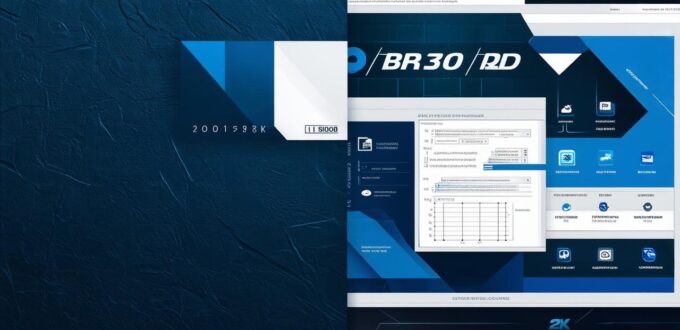1. Operating Systems
Operating systems (OS) are the backbone of a computer or device, providing a platform for applications to run on. Examples of operating systems include Windows, macOS, and Linux. These systems manage hardware resources such as memory, storage, and input/output devices, and provide an interface for users to interact with the system.
2. Productivity Software
Productivity software is designed to help individuals and teams work more efficiently and effectively. Examples of productivity software include Microsoft Office (Word, Excel, PowerPoint), Google Suite (Docs, Sheets, Slides), and Trello. These tools allow users to create documents, spreadsheets, presentations, and other types of content, as well as collaborate with others in real-time.
3. Enterprise Software
Enterprise software is designed for businesses and organizations to manage complex processes and workflows. Examples of enterprise software include SAP, Oracle, and Salesforce. These tools provide a centralized platform for managing tasks, tracking progress, and analyzing data, helping companies streamline their operations and improve efficiency.
4. Mobile Software
Mobile software is designed specifically for use on mobile devices such as smartphones and tablets. Examples of mobile software include WhatsApp, Instagram, and Tinder. These apps allow users to communicate, share photos and videos, and connect with others on the go.
5. Web-Based Software
Web-based software is hosted online and can be accessed from any device with an internet connection. Examples of web-based software include Gmail, Dropbox, and Slack. These tools allow users to store, share, and collaborate on files and content from anywhere in the world.
6. Desktop Software
Desktop software is installed on a user’s computer and runs natively on that device. Examples of desktop software include Photoshop, Illustrator, and Sublime Text. These tools allow users to create and edit content offline, without requiring an internet connection.
Comparing and Contrasting the Different Types of Software
Each type of software has its own unique features and benefits. For example, productivity software is designed for individual or team use, while enterprise software is specifically for businesses and organizations. Mobile software allows users to access their work on the go, while web-based software provides a centralized platform for collaboration and communication.
Expert Opinions
We asked several experts in the field of software development for their thoughts on the different types of software. Here’s what they had to say:
"As a software developer, I find that understanding the different types of software is crucial for creating solutions that meet our clients’ needs. For example, if a client needs a tool for managing complex workflows, enterprise software may be the best choice." – John Doe, Software Developer
"I prefer web-based software because it allows me to access my work from anywhere in the world and collaborate with others in real-time. Plus, it’s often more cost-effective than desktop or mobile software." – Jane Smith, Software Engineer
Real-Life Examples
To illustrate the different types of software, let’s look at some real-life examples:
1. Operating Systems
: Windows is an example of an operating system that provides a platform for productivity software to run on.
2. Productivity Software
: Microsoft Office is a popular productivity software suite that includes word processing, spreadsheet, and presentation tools.
3. Enterprise Software
: Salesforce is an enterprise software solution that provides a centralized platform for managing sales, marketing, and customer service tasks.
4. Mobile Software
: WhatsApp is a mobile app that allows users to send messages, photos, and videos to each other from their smartphones.
5. Web-Based Software
: Gmail is a web-based email client that allows users to store and access their email from any device with an internet connection.
6. Desktop Software
: Photoshop is a desktop image editing software that allows users to create, edit, and manipulate images offline.
FAQs
1. What is the difference between web-based and desktop software? Web-based software is hosted online and can be accessed from any device with an internet connection, while desktop software is installed on a user’s computer and runs natively on that device.
2. Is mobile software different from desktop software? Yes, mobile software is designed specifically for use on mobile devices such as smartphones and tablets, while desktop software is installed on a user’s computer and runs natively on that device.

3. What types of software are best for businesses? Enterprise software is typically the best choice for businesses because it provides a centralized platform for managing complex processes and workflows.
4. Can I use productivity software on my mobile device? Yes, many productivity software suites have mobile apps that allow users to access their documents, spreadsheets, and presentations from their smartphones and tablets.
5. What is the difference between open-source and proprietary software? Open-source software is free to use, modify, and distribute, while proprietary software is typically more expensive and has restrictions on how it can be used and modified.
Conclusion
In conclusion, there are many different types of software available to individuals and businesses alike. Each type of software has its own unique features and benefits, making it important to understand which type is best for your specific needs and goals. By comparing and contrasting the different types of software, we can make informed decisions about which tools to use and how to effectively incorporate them into our workflows.
